|
Getty Villa
Page 2 of 4
http://www.getty.edu/visit/
October 1, 2009
Posted December 22, 2009
© 2009, Herbert E. Lindberg
This page is part of a multi-tour
visit with Walt and Hazel:
|
We continue onto Page 2 with no further
introduction:
|
| Interior courtyard, main entrance on right |
 |
| View
across courtyard from main entrance end (statues here are reproductions) |
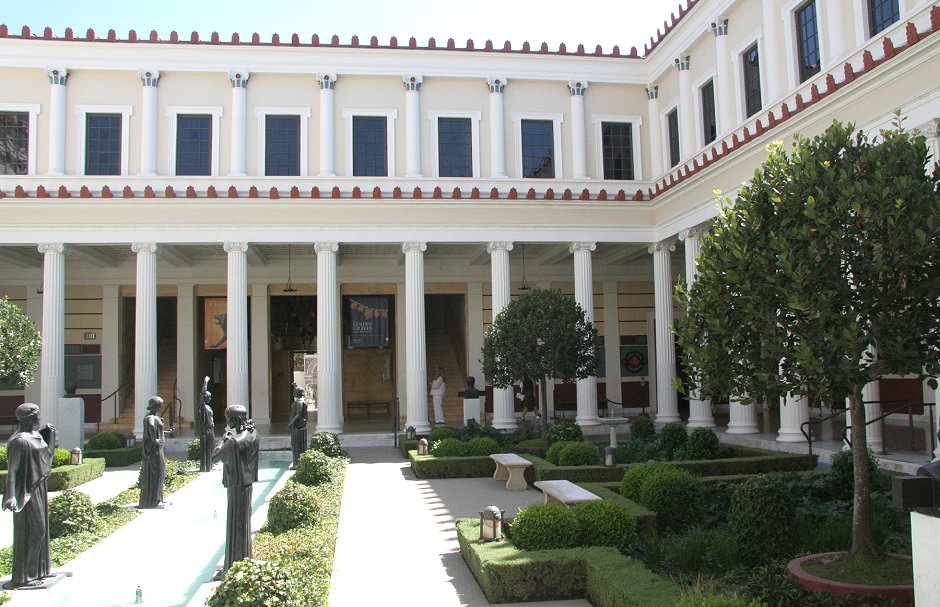 |
| Another
view, straight down the courtyard pond |
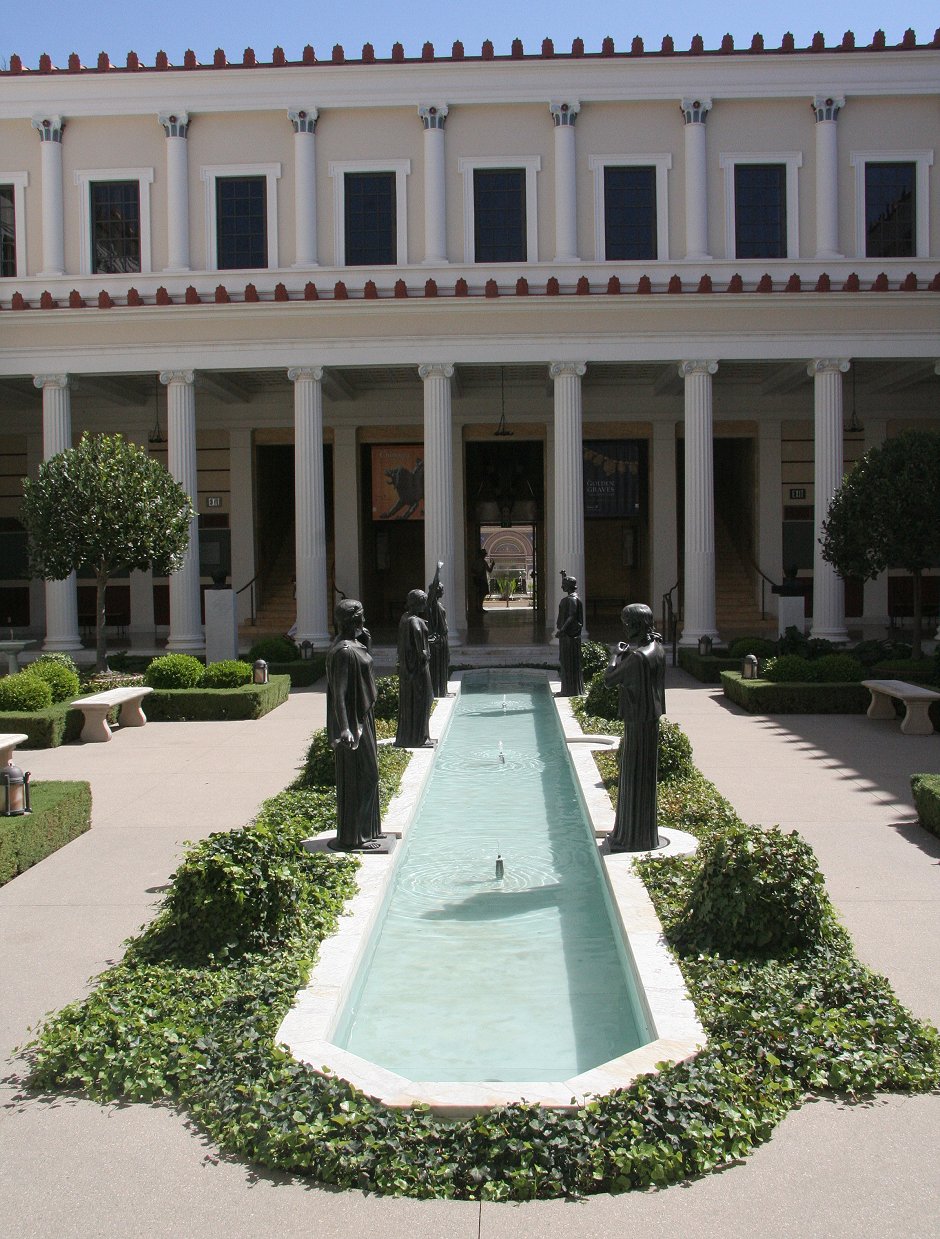 |
| Closer
view of a pair of courtyard statues |
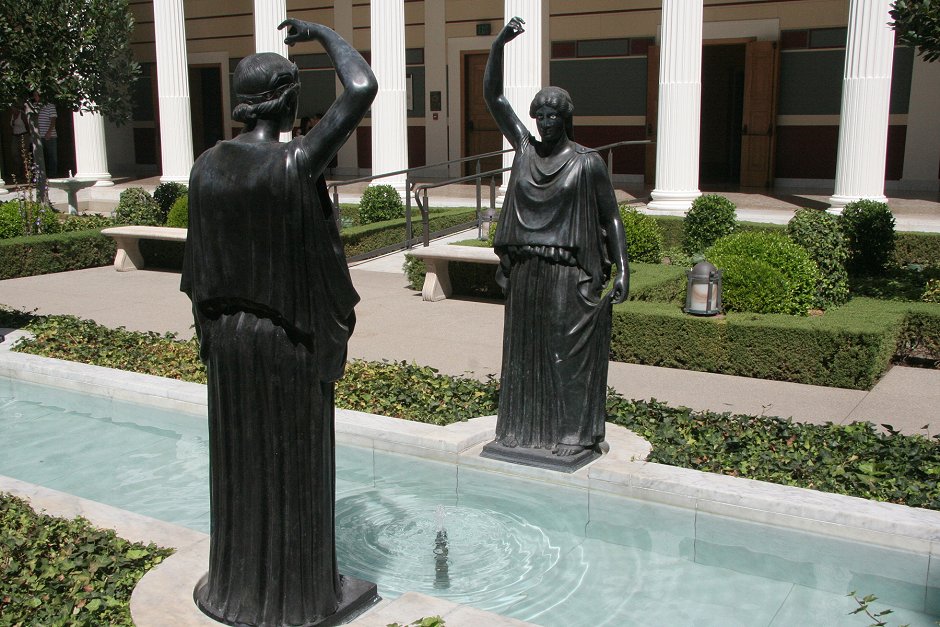 |
Sarcophagus
with Scenes from the Life of Achilles; Roman, made in Attica, Greece, A.D.
180--220, Marble
Even centuries after the Trojan War was fought, its epic
stories remained popular, as exemplified by the Images carved on this
monumental Roman sarcophagus (coffin). It is decorated on three sides with
scenes from the life of Achilles. On the right side (not seen here), Odysseus discovers the
hero hiding among the daughters of Lykomedes on the island of Skyros. On the
left side (also not seen), Achilles dons his armor with Odysseus's help. On the front,
Achilles mounts his chariot to drag Hector's slain and stripped body before
the walls of Troy.
The back of the sarcophagus is shallowly sculpted with an
unrelated scene of battle between the Greeks and the centaurs (part man,
part horse). The lid shows a couple reclining on a couch. The sculptor
deliberately left their heads unfinished so that the owners of the coffin
could have the portraits carved.
|
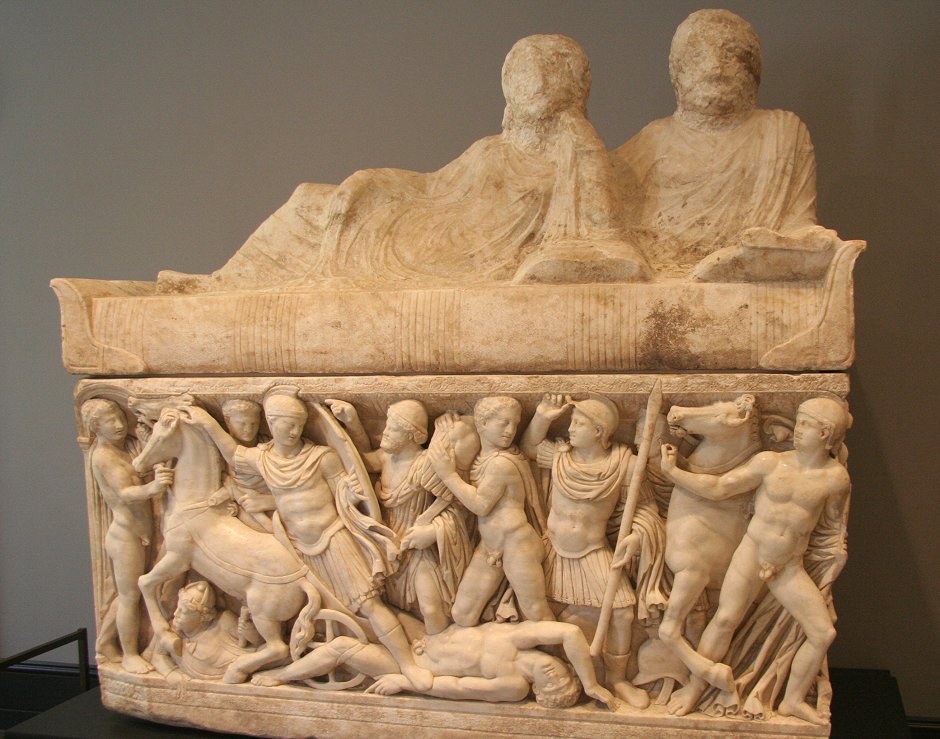 |
| Elaborate
bowl |
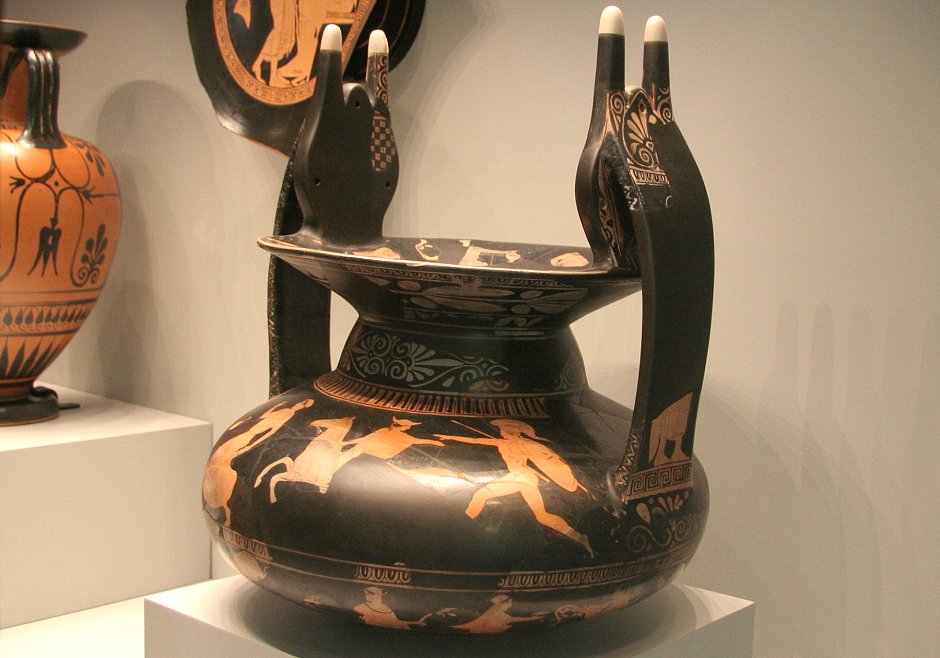 |
Map
of Odysseus's journey home, to support descriptions of art objects related
to The Odyssey
Homer's epic poem
The Odyssey tells of the Greek hero Odysseus's ten-year journey from
Troy back to Ithaca, his island home. Along the way, he and his crew are
plagued by the gods and encounter numerous monsters and wondrous creatures,
such as the one-eyed Cyclops Polyphemos, the enchantress Circe, the seductive
Sirens, and the monstrous Scylla and Charybdis. After enduring years of
hardship, Odysseus arrives in Ithaca to find his home invaded by suitors
courting his wife, Penelope. She had delayed selecting one of them to be her
husband by promising to wed when she finished weaving a tapestry, which she
secretly unraveled at the end of each day. Odysseus's return leads to the
slaughter of the suitors and a reunion with his wife.
|
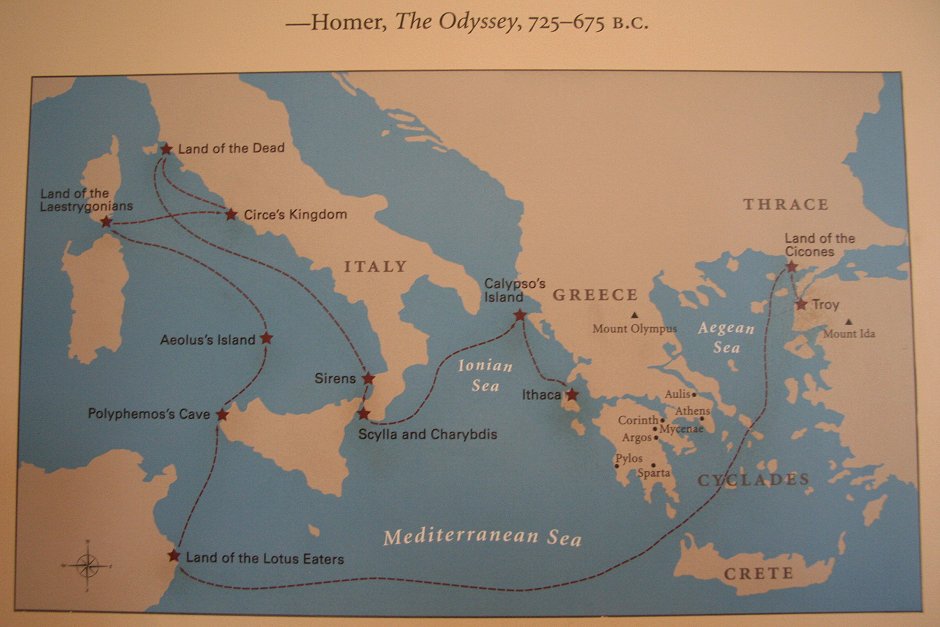 |
Poet
as Orpheus with Two Sirens
Greek, made in Taras, South Italy, 350--300 B.C., terracotta and pigment
Orpheus, the son of Apollo (god of prophecy and music) and a
Muse, was considered the most skilled singer in antiquity. He is best known
for his failed attempt to rescue his wife, Eurydike, from the Under-world.
Another adventure is alluded to here: Sailing with Jason and the Argonauts,
Orpheus encountered the Sirens, mythical bird-women whose seductive singing
lured Sailors to their deaths. Orpheus rescued his companions with a song so
beautiful that the Sirens despaired and threw themselves into the sea.
This seated man has been identified as Orpheus because the
statue once
cradled a lyre in its left arm and his mouth seems to be open in song. The
cult of Orpheus, which promoted a belief in life after death, flourished in
southern Italy, where this group was made. In South Italian art of this
period, however, Orpheus usually wears an Eastern costume, which is not seen
on this figure. Since Sirens often appear on tombs, mourning and protecting
the dead, he may be a mortal, perhaps a poet or a singer, depicted as Orpheus
in a funerary monument.
|
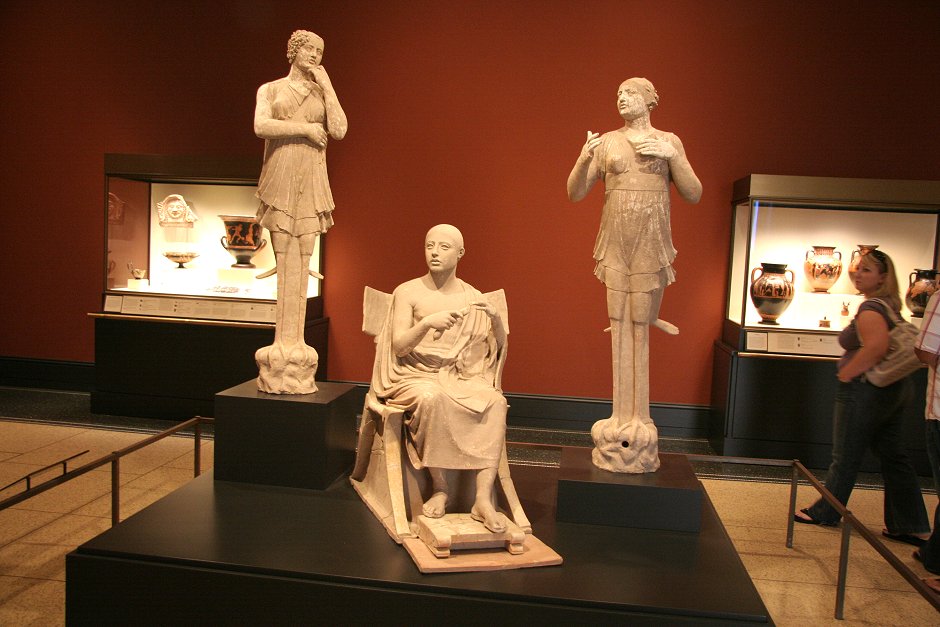 |
| Close-up
of Orpheus (Note the many fragments that had to be assembled.) |
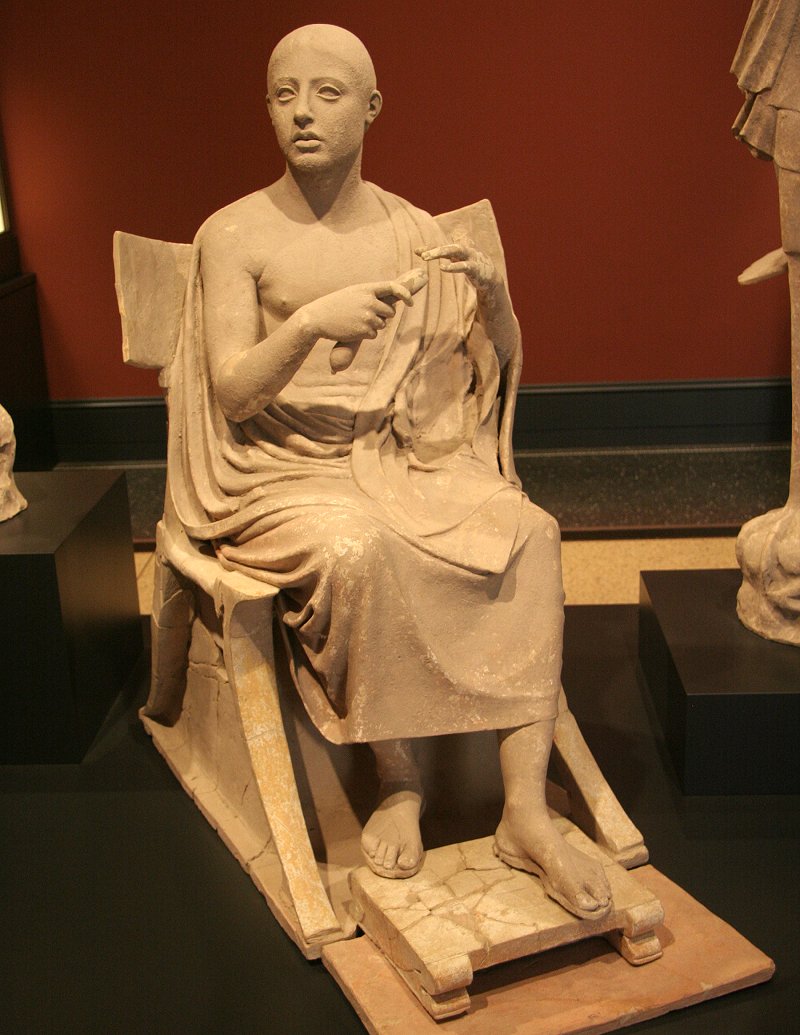 |
Hercules; Roman, A.D.
100--200, Marble and pigment
The greatest of the Greek heroes, Herakles was
enthusiastically adopted by the Romans, who called him Hercules. Although this
statue has been damaged over time, the hero's standard symbols—the skin of
the Nemean lion and the club—identify him. Here Hercules also wears a wreath
of white poplar leaves and a fillet (ribbon) with its ends trailing over his
shoulders. The fillet marks him as an athletic victor, and white
poplar was associated with the
Olyrnpic Games, which the hero was credited with founding in honor of his
father, Zeus (king of the gods). According to tradition, Herakles imported
white poplar from northwestern Greece, and it was the only wood used to fuel
the altars at Olyrnpia. Statues such as this one were extremely popular,
commonly appearing in Greek and Roman gymnasiums, where athletes trained.
|
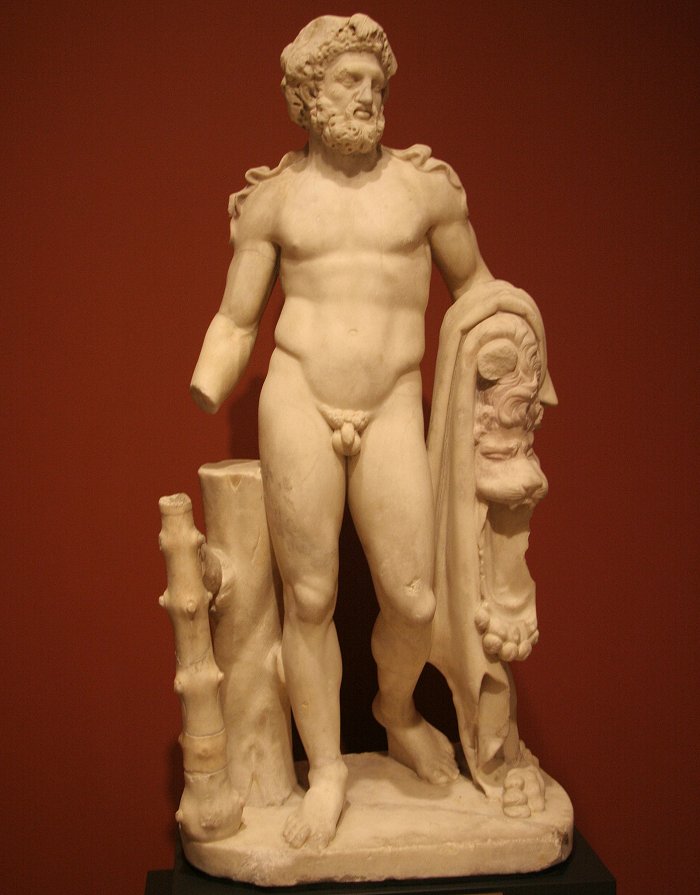 |
Wine Cup with Athena and Herakles Fighting the
Giants; Greek, made in Athens, 540--530 B.C.
Scenes from the Gigantomachy, a mythical battle between
the gods and the giants, adorn this vessel. In the center, Athena
(goddess of warfare) prepares for battle. Her opponents emerge
menacingly from behind the eyebrows of the two large eyes. Near one
handle, the hero Herakles (identified by his lionskin) fights a giant. A
prophecy had foretold that the gods could not win without the help of a
mortal, so Herakles came to the aid of the gods at Athena's demand.
|
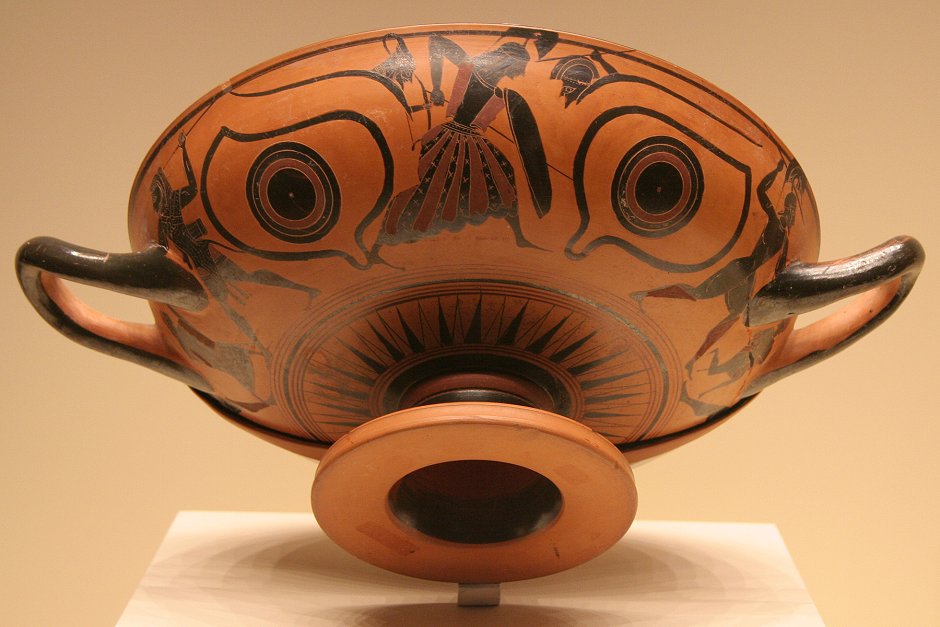 |
Appliqué
of a Boy Wearing a Lionskin; Greek, about 100 B.C., Bronze
Although this appliqué
seems to depict a young Herakles wearing his lionskin, it more likely
represents another figure with the hero's attribute. The delicate features and
the distinctive topknot suggest that this is Eros (child god of love), who was
often shown with the symbols of other mythological figures. A quiver strap
crosses his chest, and remnants of wings survive at his shoulders.
|
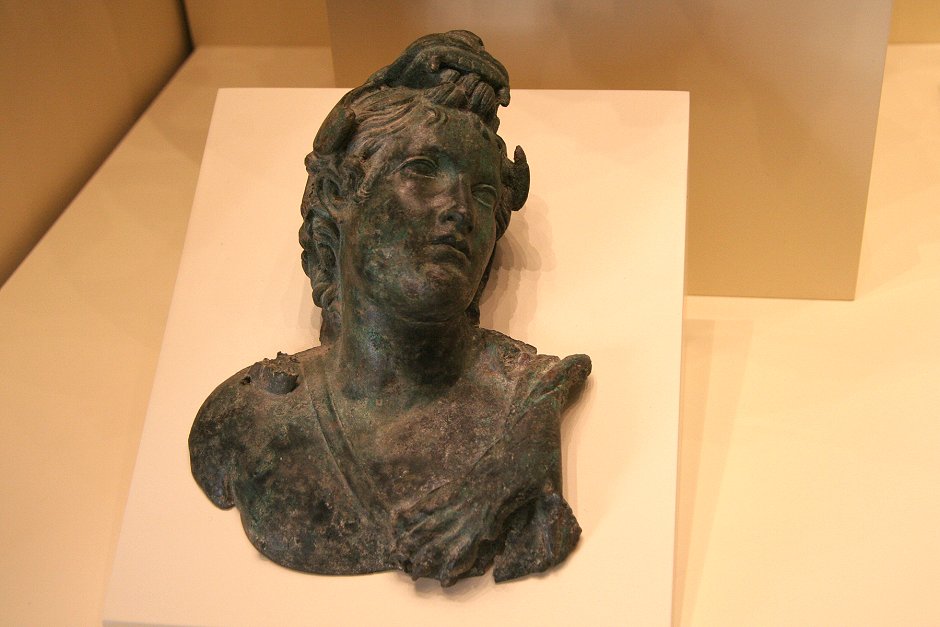 |
The
Lansdowne Herakles
This
sculpture was one of J. Paul Getty's most prized possessions and, in fact,
inspired him to build this Museum in the style of an ancient Roman villa.
The statue, representing the Greek hero Herakles with his lionskin and club,
was discovered in 1790 near the villa of the Roman emperor Hadrian (ruled
A.D. 117--138) at Tivoli, Italy. It was purchased in 1792 by an English
collector, the Marques of Lansdowne, to become part of his extensive private
collection of ancient sculptures.
Shortly
after its discovery, the statue was reworked in Rome, probably by Carlo
Albacini, a prominent restorer. A spirit of purism caused it to be stripped
of its restorations in the 1970s, but these historical additions were
reintegrated in the 1990s to present the work as it appeared in the
eighteenth century.
|
 |
Satyr
Pouring Wine; Roman, A.D. 1-100, Marble
Modeled after a popular work by the famed Greek sculptor
Praxiteles (active about 375-340 B.C.) this statue represents a young satyr
pouring wine from a now-missing pitcher into a cup once held in his left
hand. Satyrs were part-human, part-horse or -goat companions of Dionysos
(god of wine). Only the pointed, animal like ear of this figure identify him
as a satyr.
The sculpture was one of four identical figures that
decorated the villa of the emperor Domitian (ruled A.D. 81-96) near Castel
Gandolfo, Italy. This one was missing its head when it was discovered in
1657. By copying the head of another of the satyr statues, the work was
restored in the seventeenth century.
|
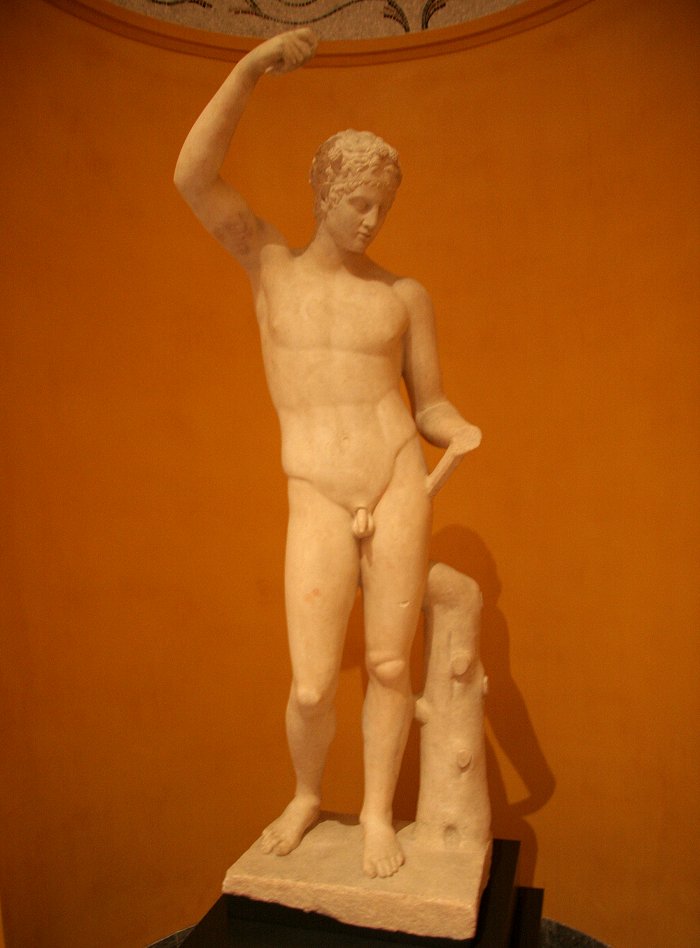 |
| Gallery
with four muse statues between the columns. |
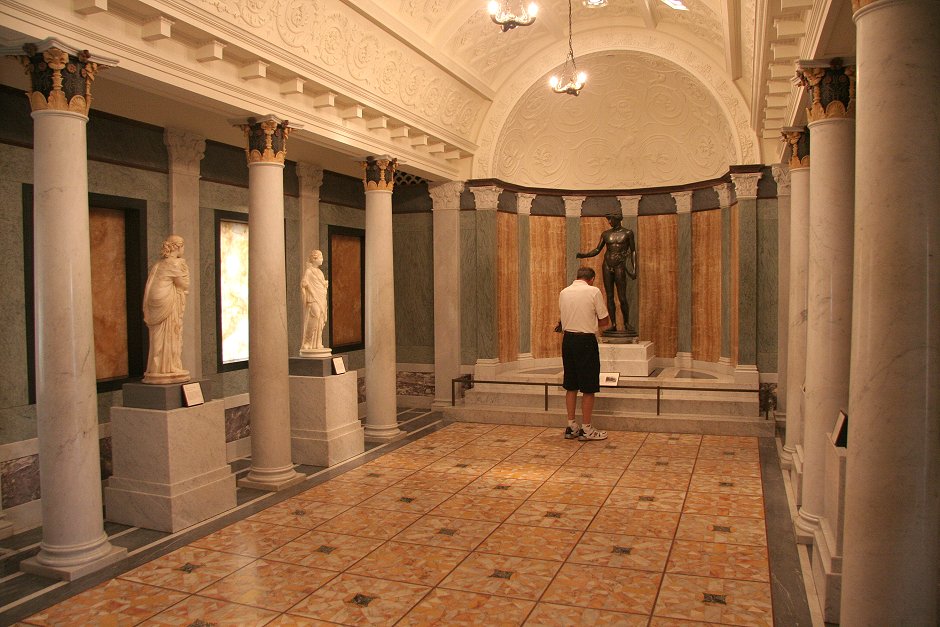 |
Continue to Page 3 | Return to
Page 1 | Home
|